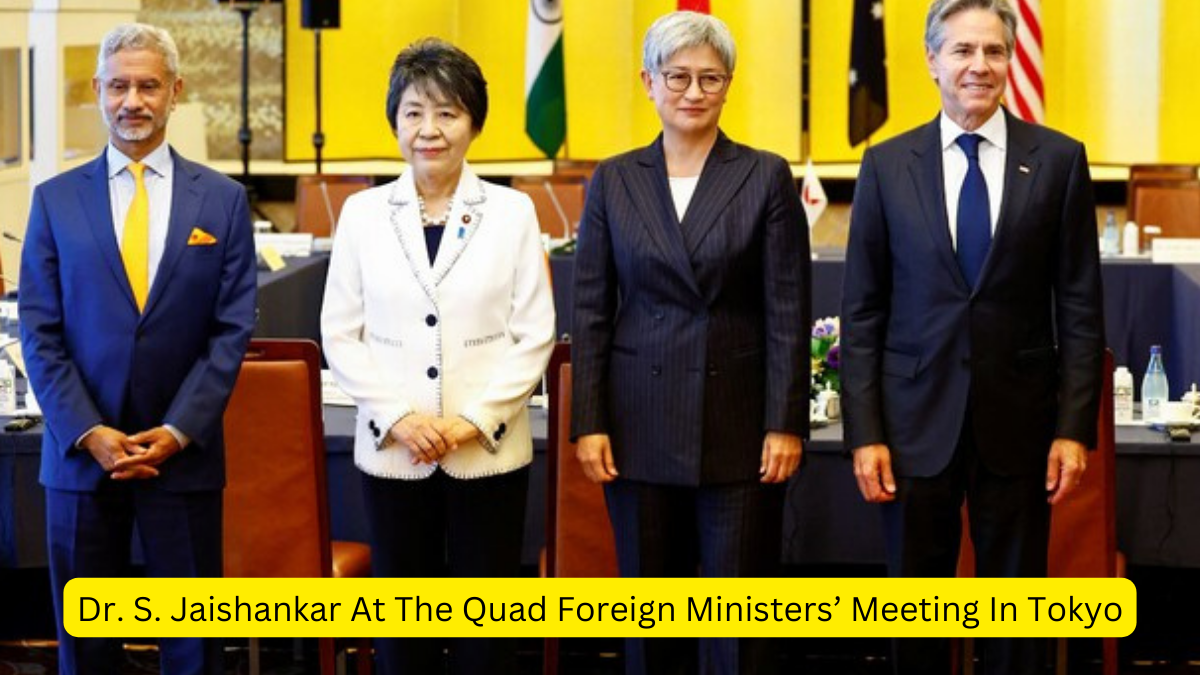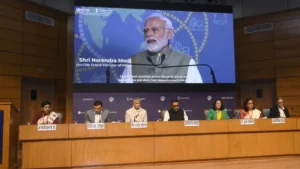Foreign ministers from Australia, India, Japan and the United States said on July 29, they were seriously concerned about intimidating and dangerous manoeuvres in the South China Sea and pledged to bolster maritime security in the region. The joint statement came after talks between the so-called ‘Quad’ countries in Tokyo, attended by Australia’s Penny Wong, India’s Subrahmanyam Jaishankar, Japan’s Yoko Kamikawa and Antony Blinken from the U.S.
Security talks between the U.S. and Japan
In security talks between the U.S. and Japan on July 28, the two allies labelled China the “greatest strategic challenge” facing the region. “We are seriously concerned about the situation in the East and South China Seas and reiterate our strong opposition to any unilateral actions that seek to change the status quo by force or coercion,” the ministers said in the statement, which did not directly mention China.
Serious concern about the militarization
They also expressed serious concern about the militarization of disputed features and coercive and intimidating manoeuvres in the South China Sea, including dangerous use of coast guard and maritime militia vessels.
Chinese vessels have repeatedly clashed with Philippine ships seeking to resupply its troops on the disputed Second Thomas Shoal in recent months, although the two countries in July reached a provisional agreement that aims to ease tensions.
To free and open maritime order
The Quad group said they were working on a series of initiatives to maintain “the free and open maritime order” including helping partners improve domain awareness via satellite data, training and capacity building. They also announced a plan to set up a new maritime legal dialogue.
Indo-Pacific and Indian Ocean region
“We are charting a course for a more secure and open Indo-Pacific and Indian Ocean region by bolstering maritime security,” Blinken said in remarks to reporters after the meeting. “In practical terms what does this mean? It means strengthening the capacity of partners across the region to know what’s happening in their own waters,” he added.
He said the U.S. would continue to work with its partners to ensure freedom of navigation and the unimpeded flow of lawful maritime commerce.
Military command in Japan
The U.S. announced plans on July 28, for a major revamp of its military command in Japan. It was among several measures announced by the allies to address what they said was an “evolving security environment“, noting various threats from China including its muscular maritime activities.
International situation with Russia
“Uncertainty surrounding the international order as well as the international situation has been increasing with Russia continuing its aggression in Ukraine, attempts to unilaterally change the status quo by force in the East China Sea and South China Sea, and the launch of ballistic missiles by North Korea,” Japan’s Kamikawa said after the talks.
To advance cooperation in cybersecurity
The Quad ministers also pledged to advance cooperation in cybersecurity to protect supply chains and critical infrastructure, including undersea cables. After leaving Tokyo, Blinken and Austin will hold security talks with another Asian ally, the Philippines, as the Biden administration seeks to counter an increasingly bold China.
What is QUAD?
The Quadrilateral Security Dialogue (QSD), commonly known as the Quad, is a strategic security dialogue between Australia, India, Japan, and the United States that is maintained by talks between member countries. The dialogue was initiated in 2007 by Japanese Prime Minister Shinzo Abe, with the support of Australian Prime Minister John Howard, Indian Prime Minister Manmohan Singh and U.S. Vice President Dick Cheney. The dialogue was paralleled by joint military exercises of an unprecedented scale, titled Exercise Malabar. The diplomatic and military arrangement was widely viewed as a response to increased Chinese economic and military power.




 IIT Madras and India AI Mission to Host ...
IIT Madras and India AI Mission to Host ...
 India Begins Countdown to 2nd WHO Global...
India Begins Countdown to 2nd WHO Global...
 Amit Shah Inaugurates EARTH Summit 2025 ...
Amit Shah Inaugurates EARTH Summit 2025 ...







